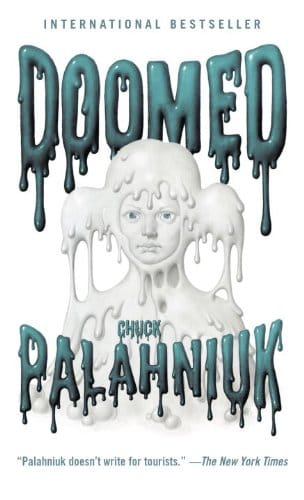Doomed: Why Our Minds Gravitate Toward Catastrophe
Why does catastrophic news hold our attention? Explore the history, psychology, and media mechanics that make us feel doomed—and learn strategies to break the cycle.

Introduction: The Curious Magnetism of Doom
Type the word “doomed” into any search bar and you will find a flood of articles predicting the collapse of economies, ecosystems, and even civilization itself. Yet instead of clicking away, millions of readers dive right in. Why do grim forecasts captivate us? How has the notion of being doomed shaped culture, storytelling, and everyday behavior? This 800-word exploration investigates the psychological circuitry, historical context, and media mechanics that make catastrophic narratives so irresistible–while also offering strategies to escape an endless spiral of gloom.
What Does It Mean to Feel Doomed?
At its core, the word “doomed” describes an outcome that appears inevitable, negative, and irreversible. Feeling doomed is an emotional cocktail of powerlessness, fear, and resignation. Whether triggered by climate reports or personal setbacks, the sensation hijacks our focus, convincing us that no action will make a meaningful difference. That perceived finality distinguishes doom from ordinary worry: it smothers hope before motivation has a chance to arise. Understanding this distinction is the first step toward regaining agency and perspective.
Historical Fascination With Doom
Humanity’s fixation on disastrous endings is not new. Ancient mythologies are packed with apocalyptic prophecies, from Ragnarok in Norse legend to the Hindu cycle of Kali Yuga. Medieval Europe shuddered under doomsday sermons warning of imminent divine judgment, while the Black Death sparked waves of fatalistic art and literature. In the 20th century, nuclear annihilation haunted post-war cinema and literature, producing classics like “On the Beach” and “Dr. Strangelove.” Each era adopts fresh symbols—plagues, asteroids, mushroom clouds—to project communal anxieties onto a narrative canvas. The persistence of such motifs suggests that doom fulfills a deep storytelling need: to give chaotic events a dramatic structure with a definitive, if grim, endpoint.
The Psychology Behind Our Obsession
Three cognitive biases amplify our attraction to doomed scenarios. First, negativity bias makes threats more salient than blessings; our brains evolved to prioritize danger so we could survive. Second, availability heuristic causes recent or vivid disasters to dominate judgment, making catastrophe feel more likely than statistics support. Third, catastrophizing—one of the classic cognitive distortions—turns minor setbacks into sweeping fatal conclusions. Social media algorithms, designed to amplify engagement, unknowingly harness these biases. Posts signaling catastrophe receive more clicks, comments, and shares, creating a feedback loop that normalizes a perpetual sense of doom.
Neuroscience adds another layer: high-arousal emotions such as fear activate the amygdala and stimulate the release of stress hormones, giving us a visceral “rush.” That physical jolt can become addictive, leading to behaviors like doomscrolling—endless consumption of negative news despite its emotional toll. Thus, feeling doomed isn’t only psychological; it is also neurochemical.
Doom in Modern Media
The contemporary information ecosystem is uniquely suited to deliver a constant drip of alarming content. Push notifications, 24-hour news cycles, and viral headlines compress global tragedies into bite-size alerts. Streaming platforms offer post-apocalyptic dramas ranging from “The Last of Us” to “The Walking Dead,” each repackaging collective fears for entertainment. Even comedy has adopted a doom-tinged flavor, with late-night hosts joking about rising seas and political collapse. Because media companies monetize attention, the most sensational stories climb to the top of feeds, cementing a climate where being doomed feels like ordinary background noise.
Ironically, this barrage risks becoming a self-fulfilling prophecy. When people perceive future failure as guaranteed, they are less likely to support impactful policies or personal changes that could avert disaster. Thus the narrative of doom can sabotage constructive action, demonstrating that stories shape reality as much as they reflect it.
How to Cope With Doomscrolling and Catastrophic Thinking
1. Curate Your Inputs: Unsubscribe from redundant alerts and follow solution-focused outlets. Quality beats quantity when chasing truth over terror.
2. Practice Cognitive Reframing: Challenge “inevitable” assumptions by asking for data. Replace statements like “We are doomed” with “We face serious challenges that require effort.”
3. Schedule Worry Time: Allocate a specific 15-minute window to read concerning news, preventing it from hijacking the entire day.
4. Engage in Collective Action: Volunteering, voting, or donating transforms abstract dread into concrete steps, restoring a sense of agency.
5. Seek Professional Help if Needed: Chronic feelings of doom can signal anxiety or depression that benefits from therapy or medical support.
Conclusion: Reclaiming the Future From Doom
Doomed narratives will continue to populate headlines, films, and social feeds, because they tap into timeless fears and biological wiring. Recognizing this allure grants us the power to step back, question, and choose balanced perspectives. Catastrophe may sell newspapers and attract clicks, but it never tells the whole story. Humanity has repeatedly flirted with the abyss—only to innovate, adapt, and survive. By understanding why we feel doomed, we equip ourselves not merely to endure grim forecasts but to write alternative endings grounded in resilience and hope.



